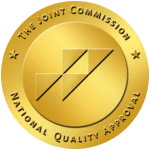7 Ways to Deal with Cravings in Early Recovery

Detoxing from drugs or alcohol is a long, painful process, where your body adjusts to not having a substance. While the worst is over after the first few weeks, you still have to deal with cravings, which will range from mild to extremely intense. Learning to cope with cravings in early recovery is crucial to your long-term recovery.
While cravings will lessen over time, they are particularly strong in early recovery. If you’re trying to quit on your own or have just left rehab, cravings can hit just walking past somewhere you used to spend time, when you run into your old friends, and when you’re tired, hungry, lonely, or sad.
While everyone’s journey towards recovery is different, most of us can use these 7 ways to deal with cravings in early recovery.
1. Delay
Most cravings last an average of 15 minutes. While that can seem like forever while waiting it out, it’s a relatively short time. If you start to feel cravings, do something else. Try to change your environment (especially if the environment triggered the cravings), and do something with your hands if possible. If you’re at work, focus on work and do that rather than going off somewhere on your own. If you are at home, do a task or a chore. Take out the trash, wash the windows, or do crafts. Distracting yourself and delaying acting on the craving will stop you from using, because if you can delay for 15 minutes, the average craving will be gone.
2. Avoid Triggers
While avoidance is not a long-term solution, it is very helpful for cravings in early recovery. You can work with your therapist or counselor (or note them down yourself) to determine what your triggers are and then work to avoid them. Most people are triggered by negative emotions, HALT (Hungry, Angry, Lonely, Tired) for example. You are likely also triggered by people you used or drank with, the substance, places where you used or drank, and so on. Try writing down places and people you were with when cravings hit and try to pin down where they are coming from. This can be extremely difficult in the first few days after detox, because cravings will likely be a near constant – but in the following weeks, they will be much more likely to stem from specific incidents.
3. Exercise
Exercise helps you to reduce cravings in several ways. For example, if you stop what you are doing and go exercise when you start feeling cravings, you’re using a very good delay tactic. However, exercise also releases endorphins including dopamine that help you to feel better, helping to alleviate cravings on their own. Regular exercise, and at least 30 minutes per day, will boost the natural levels of dopamine in the body, which will reduce cravings. Exercise has a lot of benefits and doing it regularly will help you to repair damage done to your body through addiction, will improve your mood, and will lessen cravings.
4. Reduce Stress
Stress is one of the biggest triggers for relapse. Managing or reducing it can help you to improve your life, making yourself happier, and increasing the natural levels of dopamine in the brain. This will, in turn, reduce short and long-term cravings so that you have a better chance of staying clean or sober. While there are numerous ways to reduce stress, including cognitive behavioral therapy, Mindfulness based stress reduction (MBSR), and even exercise, you should talk to your therapist or counselor, or plan something for yourself that you can stick to, to ensure that your option works for you. Quick ways to reduce stress include cleaning your home, exercising outside in nature, meditating, talking to someone you love, or doing something relaxing like taking a shower.
5. Talk to Others

While you typically can’t talk to just anyone about cravings, there are often numerous groups where you can talk to other recovering addicts. For example, any 12 Step group, SMART Recovery, or other similar group will give you an outlet to discuss your cravings and how to deal with them. Many recovery groups allow you to talk and listen, sometimes without officially joining the group, which can be very helpful if you need an outlet, need to talk about your problems to someone who understands, or aren’t comfortable sharing personal information about yourself until you know people better. Nearly every city has some form of 12-step group, and larger areas are often home to numerous alternatives and non-12 step groups.
6. Make Changes
If you moved back into the same home, go to the same places, or do the same things after you get clean or sober as before, you are exposing yourself to triggers. If you want to change how you live, you have to make changes in other places to remove triggers. You can’t control everything, but you can take small steps to remove obvious triggers and things that cause stress to make your life better and reduce cravings. For example, you can clean your home, you can move, you can change jobs, you can take steps to improve your career prospects, or you can avoid people who expect you to drink or use with them. In most cases, if you’re taking steps to make life better for yourself, you will reduce cravings.
7. Get Professional Help
If you’re suffering strong cravings, you can get help. Even if you’ve already gone through rehab, additional treatment, therapy, or medicine such as Naloxone can help you to reduce cravings and learn to cope with them in a professional setting. If you’re having difficulty coping and you know it, getting help is important to ensure that you maintain your recovery. In some cases, you may also be able to change your recovery. For example, if you’re having difficulty remaining clean and sober, you could request that you be moved into a sobriety house, where you will have more people to hold you accountable. If you’re going through outpatient rehab, you may want to switch to inpatient. Or, you may simply ask for additional sessions with your therapist or counselor to ensure that you have someone to talk to and someone to remain accountable to. No matter where you are on the road to recovery, recognizing when you need help and getting it is important.
Hopefully these 7 ways to deal with cravings in early recovery offer you a good basis for learning to cope with cravings so you can move past them and stay clean or sober. Good luck with your recovery.
If you or your loved one is struggling with Methamphetamine or in any drug or alcohol addiction, call us today and speak with one of our experienced and professional intake advisors, we’re here to help. Beginnings Treatment Centers is located in beautiful and sunny Southern California in Orange County, which has one of the strongest and most active recovery communities in the United States.

